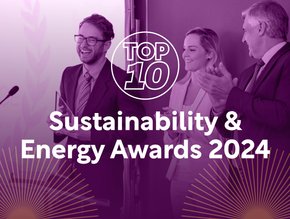Top 10 ways EU can reduce reliance on Russian natural gas

Europe’s reliance on imported natural gas from Russia has again been thrown into sharp relief by Russia’s invasion of Ukraine on February 24.
In 2021, the European Union imported an average of over 380mn cubic metres (mcm) per day of gas by pipeline from Russia, or around 140bn cubic metres (bcm) for the year as a whole. As well as that, around 15bcm was delivered in the form of liquefied natural gas (LNG). The total 155bcm imported from Russia accounted for around 45% of the EU’s gas imports in 2021 and almost 40% of its total gas consumption.
The IEA has published a 10-point plan outlining how the EU can reduce its reliance on Russian natural gas.
10: Step up efforts to diversify and decarbonise sources of power system flexibility
A key policy challenge for the EU in the coming years is to scale up alternative forms of flexibility for the power system, notably seasonal flexibility but also demand shifting and peak shaving. For the moment, gas is the main source of such flexibility and, as such, the links between gas and electricity security are set to deepen in the coming years, even as overall EU gas demand declines.
Governments therefore need to step up efforts to develop and deploy workable, sustainable and cost-effective ways to manage the flexibility needs of EU power systems.
09: Encourage a temporary thermostat adjustment by consumers
Many European citizens have already responded to Russia’s invasion of Ukraine in various ways, via donations or in some cases by directly assisting refugees from Ukraine. Adjusting heating controls in Europe’s gas-heated buildings would be another avenue for temporary action, saving considerable amounts of energy.
The average temperature for buildings’ heating across the EU at present is above 22°C. Adjusting the thermostat for buildings heating would deliver immediate annual energy savings of around 10bcm for each degree of reduction while also bringing down energy bills.
08: Accelerate energy efficiency improvements in buildings and industry
Energy efficiency is a powerful instrument for secure clean energy transitions, but it often takes time to deliver major results. In this plan, we consider how to pick up the rate of progress, focusing on measures that can make a difference quickly.
Currently only about 1% of the EU’s building stock is renovated each year. A rapid extension to an additional 0.7%, targeting the least efficient homes and non-residential buildings, would be possible through standardised upgrades, mainly via improved insulation. This would save more than 1bcm of gas use in the space of a year and would also bring benefits for employment, though it would require parallel efforts to improve supply chains for materials and workforce development.
07: Speed up the replacement of gas boilers with heat pumps
Heat pumps offer a very efficient and cost-effective way to heat homes, replacing boilers that use gas or other fossil fuels. Speeding up anticipated deployment by doubling current EU installation rates of heat pumps would save an additional 2bcm of gas use within the first year, requiring a total additional investment of €15bn.
06: Enact short-term measures to shelter vulnerable electricity consumers from high prices
With today’s market design, high gas prices in the EU feed through into high wholesale electricity prices in ways that can lead to windfall profits for companies. This has significant implications for the affordability of electricity, as well as for the economic incentives for the broader electrification of end-uses, which is a key element of clean energy transitions.
05: Maximise generation from existing dispatchable low-emissions sources: bioenergy and nuclear
Nuclear power is the largest source of low emissions electricity in the EU, but several reactors were taken offline for maintenance and safety checks in 2021. Returning these reactors to safe operations in 2022, alongside the start of commercial operations for the completed reactor in Finland, can lead to EU nuclear power generation increasing by up to 20TWh in 2022.
A new round of reactor closures, however, would dent this recovery in output: four nuclear reactors are scheduled to shut down by the end of 2022, and another one in 2023. A temporary delay of these closures, conducted in a way that assures the plants’ safe operation, could cut EU gas demand by almost 1bcm per month.
04: Accelerate the deployment of new wind and solar projectsIn 2022
In 2022, record additions of solar PV and wind power capacity and a return to average weather conditions are already expected to increase the EU’s output from these renewable sources by over 100TWh, a rise of more than 15% compared with 2021.
A concerted policy effort to fast-track further renewable capacity additions could deliver another 20 TWh over the next year. Most of this would be utility-scale wind and solar PV projects for which completion dates could be brought forward by tackling delays with permitting.
03: Introduce minimum gas storage obligations to enhance market resilience
Gas storage plays a key role in meeting seasonal demand swings and providing insurance against unexpected events, such as surges in demand or shortfalls in supply, that cause price spikes. The value of the security provided by gas storage is even greater at a time of geopolitical tensions.
The current tight seasonal price spreads in European gas markets do not provide sufficient incentive for storage injections ahead of the 2022-23 heating season, as demonstrated by the results of the recent gas storage capacity auctions in the EU. A harmonised approach to minimum storage obligations for commercial operators in the EU’s single gas market, together with robust market-based capacity allocation mechanisms, would ensure the optimal use of all available storage capacity in the EU.
02: Replace Russian supplies with gas from alternative sources
IEA analysis indicates that production inside the EU and non-Russian pipeline imports (including from Azerbaijan and Norway) could increase over the next year by up to 10bcm from 2021. This is based on the assumptions of a higher utilisation of import capacity, a less heavy summer maintenance schedule, and production quotas/caps being revised upwards.
The EU has greater near-term potential to ramp up its LNG imports, considering its ample access to spare regasification capacity. LNG trade is inherently flexible, so the crucial variables for the near-term are the availability of additional cargoes, especially those that have some contractual leeway over the destination, and competition for this supply with other importers, notably in Asia.
01: No new gas supply contracts with Russia
Gas import contracts with Gazprom covering more than 15 bcm per year are set to expire by the end of 2022, equating to around 12% of the company’s gas supplies to the EU in 2021. Overall, contracts with Gazprom covering close to 40bcm per year are due to expire by the end of this decade.
This provides the EU with a clear near-term window of opportunity to significantly diversify its gas supplies and contracts towards other sources, leveraging the options for imports provided by its large LNG and pipeline infrastructure.






